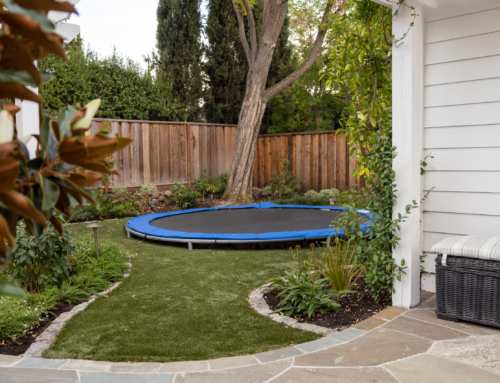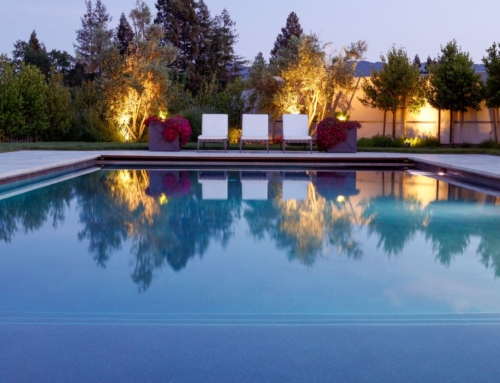Ground Work
Landscape Architecture is the design of space on every level—at our eye level, above our heads, and on the ground plane beneath our feet. The ground is an often-overlooked aspect of design, but it has the ability to define space and create interest within the landscape. Here we focus on a few of our favorite ways to define spaces from the ground up.
Rooms in the Landscape
“Rooms” in the landscape are spaces that have been defined visually as places of rest. This “room” above, for example, is created for the purpose of tranquility, as well as a transition space between the ‘Inside’ and ‘Outside’ worlds. Coming home from a long day, the sight of this entryway leaves you wondering what stress is and why you were feeling it. Even passing through on your way out, you can’t help but notice its simple beauty and take a deep breath before stepping into the rest of the world.
To make this space even more tranquil, ground cover flows like water between warm-toned stone pavers. Color has a very powerful effect on our psyche, so these choices were intentional ways of slowing and calming. Stepping over masses of greenery between pavers makes you consider carefully where you step, slowing you down and bringing your attention to the details.
Pattern & Interruption
When working with large, flat areas of the landscape, breaking up the space can create visual interest and help to slow the viewer’s experience. In our fast-paced world, we all sometimes need a reminder to slow down and enjoy our leisure time! The detailing in this pathway above bridges the space between house and hillside in a unique way and causes us to slow and appreciate the detail of the design instead of rushing.
Borders & Boundaries
Borders create delineations in the landscape and have the ability to serve as boundaries, which can be very useful for organizing space. Note how the low wall above forms an effective boundary for the planting and leads the eye up the stairs, despite its short stature. Never underestimate the power of suggestion! Even low walls and borders define the circulation, or how people will move through a space—one of the most important elements of good design.
Permits & Requirements
Sometimes where you live has unavoidable consequences on requirements that will need to be incorporated into a design. The clients who live at the end of this driveway are the perfect example of this somewhat unique scenario. The county they live in requires homeowners in this neighborhood to have a driveway large enough for a firetruck to turn around. They also have water tanks that can be tapped into by first responders in an emergency situation. Due to the increased concerns of fire in that area, these were extra steps that needed to be taken in order to keep everything in line with code. Some circumstances require permitting; others just need purposeful planning while the groundwork is being laid. Luckily, we have 50 years of experience in the field and have seen just about everything.
All About the Unusual
We are always game for the chance to do something unique and unexpected. Which is why when it comes to material details, we are maybe just a little bit obsessed with new ideas that challenge the norm. Have you ever thought about storm drains?* Why should they be boring? Apparently the talented folks at Urban Accessories had the same thought when they designed these fantastic drain covers. Who wouldn’t be excited about this? It’s a masterpiece!
*If you have never once thought about storm drains, we actually hear that is normal. Pretty sure we just really, really love our jobs.
Montgomery Robbins creates landscapes that are perfectly custom, down to the last detail. We are always up for new projects and would love to hear from you.











